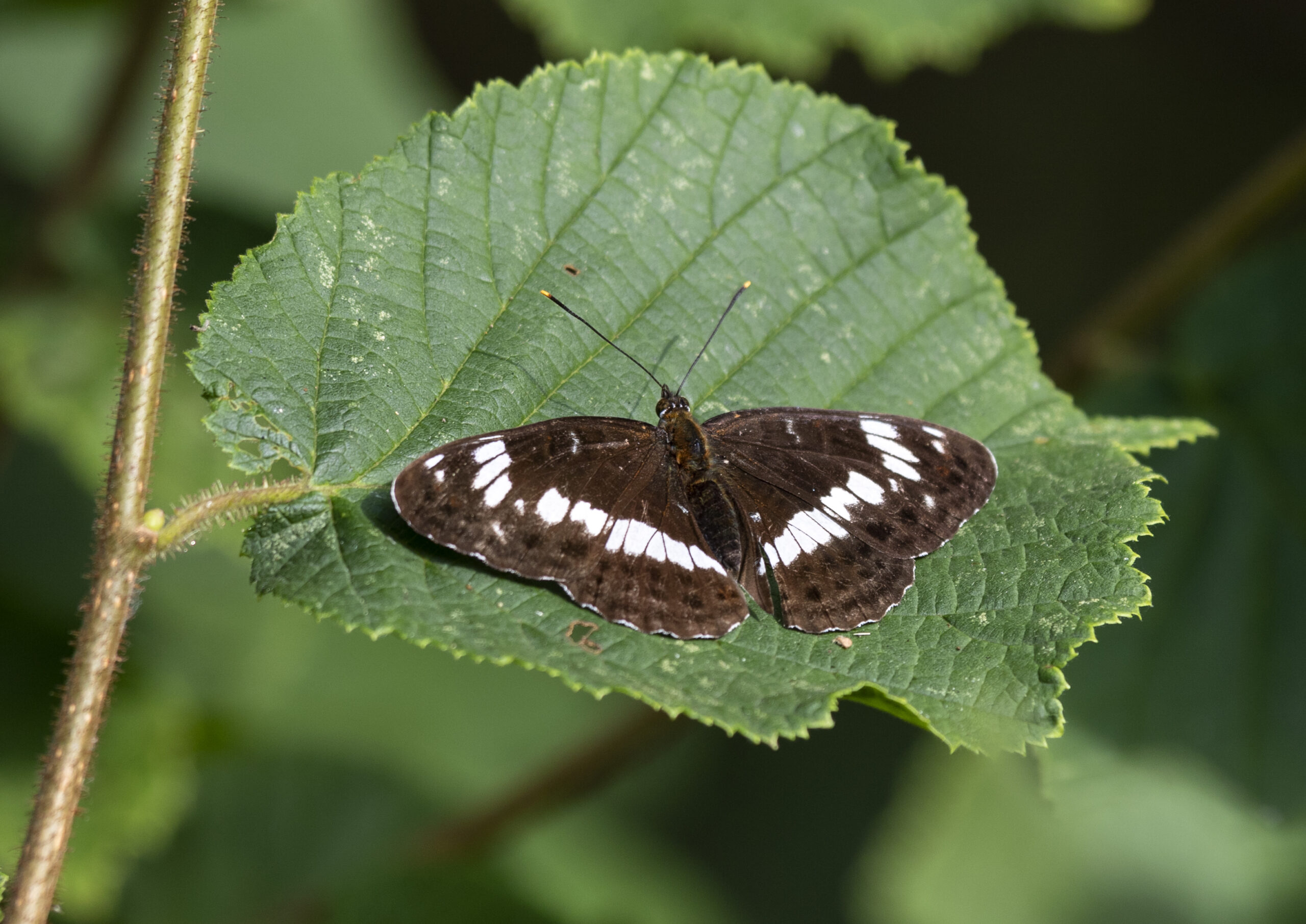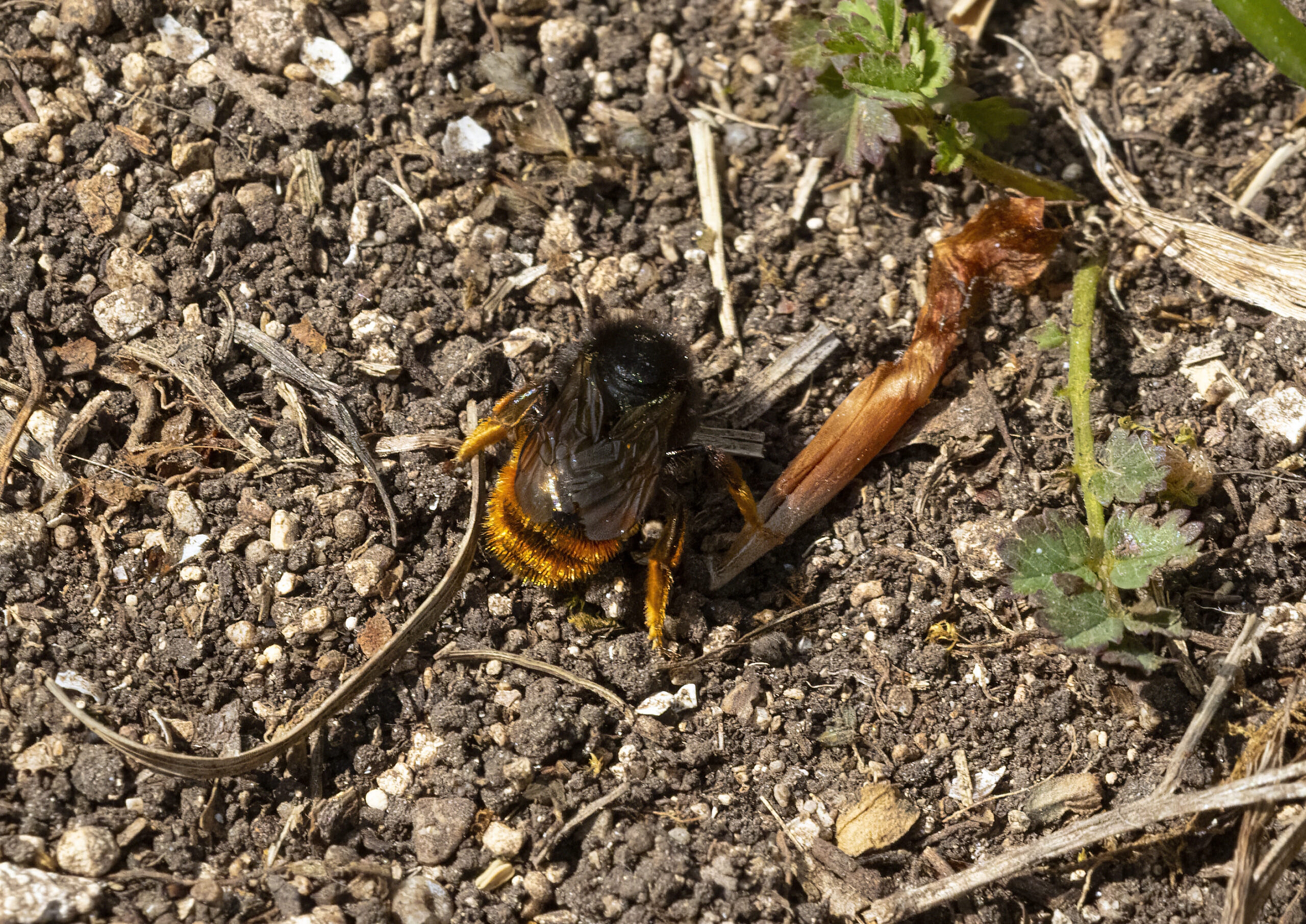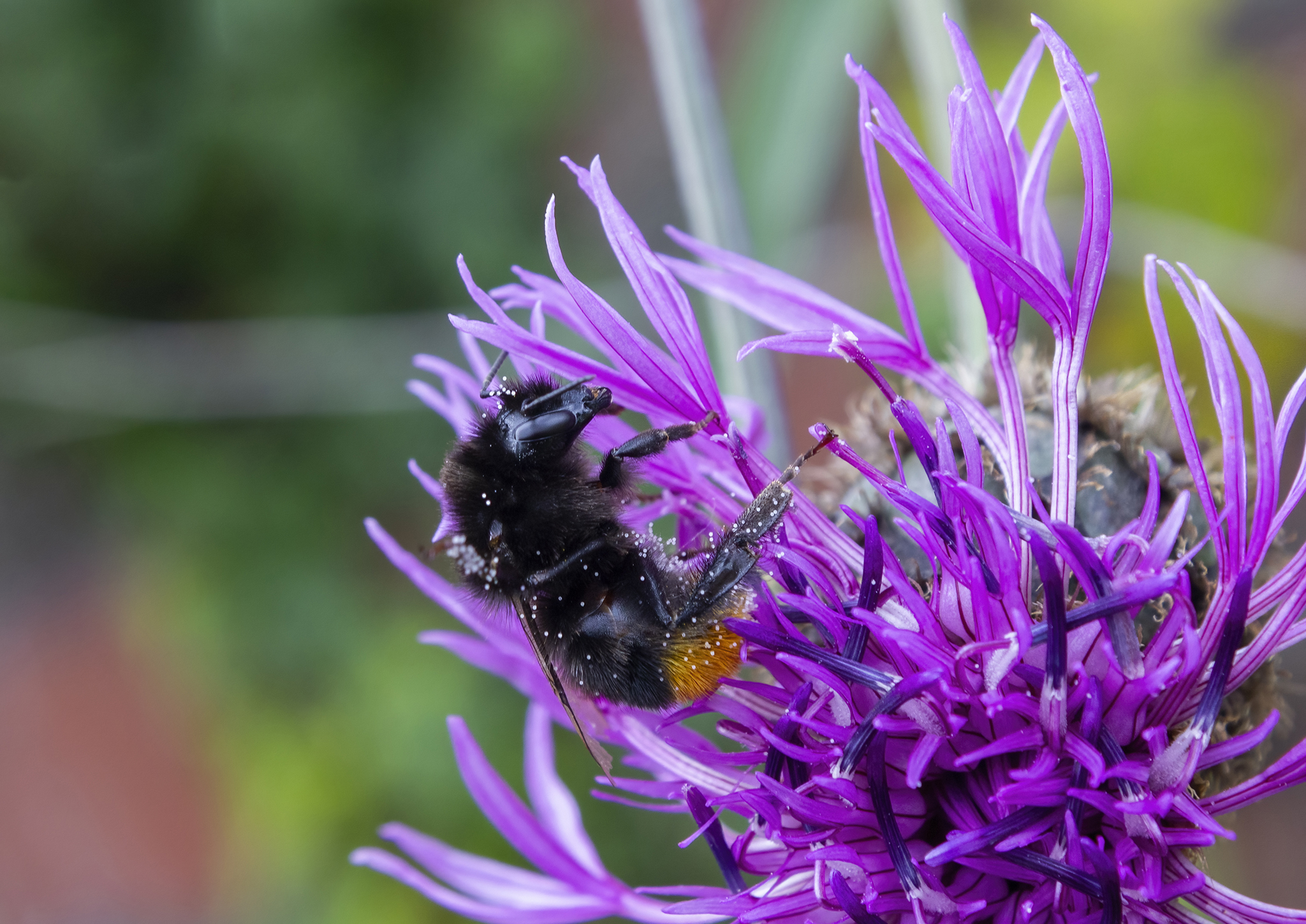Recently,I stood next to a small patch of scrubby grassland. Roughly triangular in shape, bounded on each side by footpaths worn by countless walkers boots, it measured perhaps ten feet across with the rotting remains of a small tree, now reduced to just a few moss-covered logs in the the middle. Anyone, including me, would have glanced at it quickly, seen a tangle of leaflitter and nettles and passed by.
But yesterday I was looking for a bee. I’m trying to make a short film about the two-coloured mason bee and its unsual lifecycle, which I’ve written about here: https://stevedeeley.com/the-superhero-youve-never-heard-of/. It just so happened that these wonderful little bees were floating around this small patch of land, so I settled down to watch them.
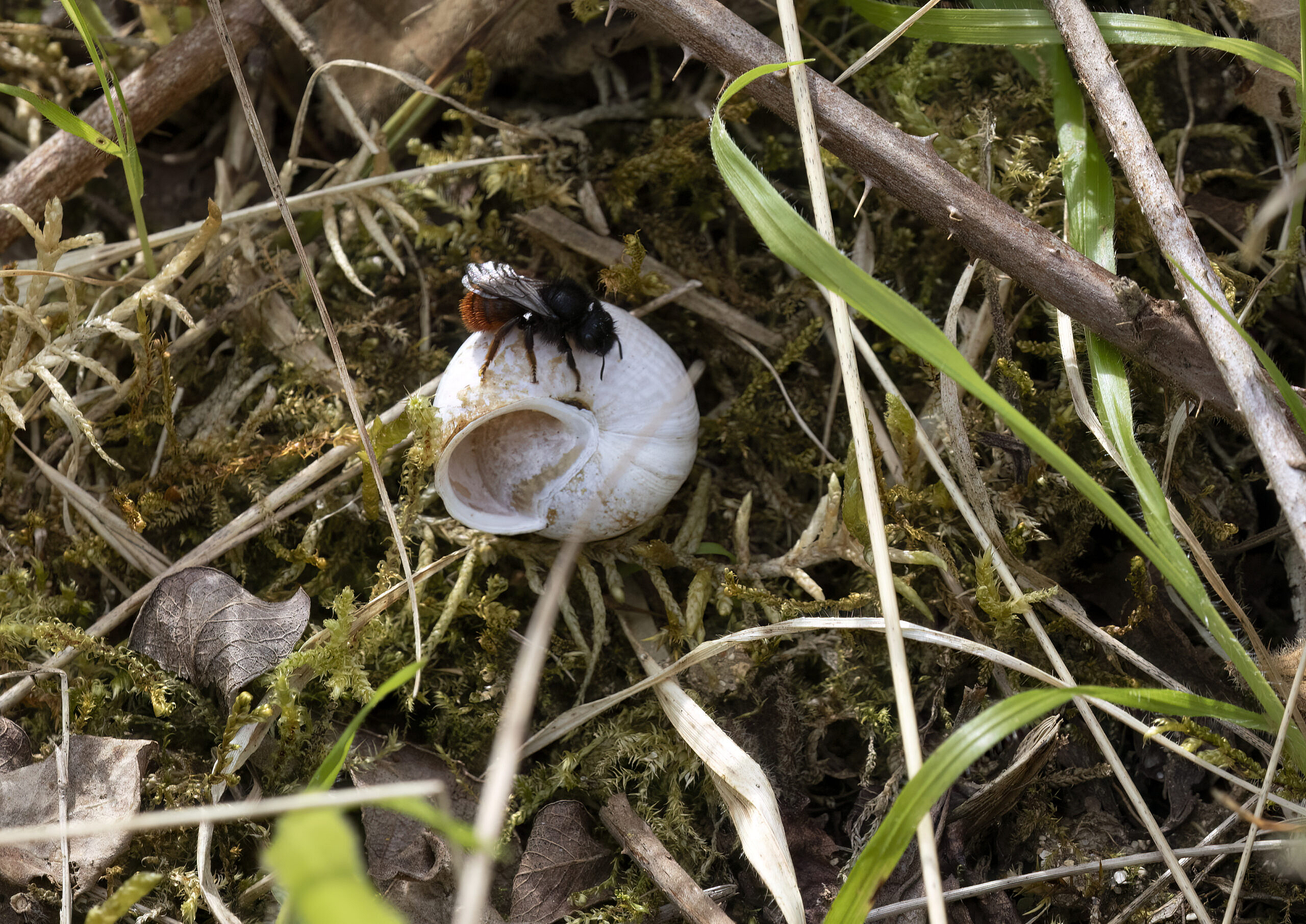
I soon realised that they weren’t alone. Over the course of four hours, I also saw the grey-haired mining bee, another tiny bee that lives in holes in the ground. I saw a common carder bee itself struggling under the burden of almost invisble mites, ablotch-winged hoverfly, and a mass of other tiny, milimetres-long bees and wasps that I couldn’t identify (Britain has a lot of species of small flying inscts. I’ve given up trying to learn them all).
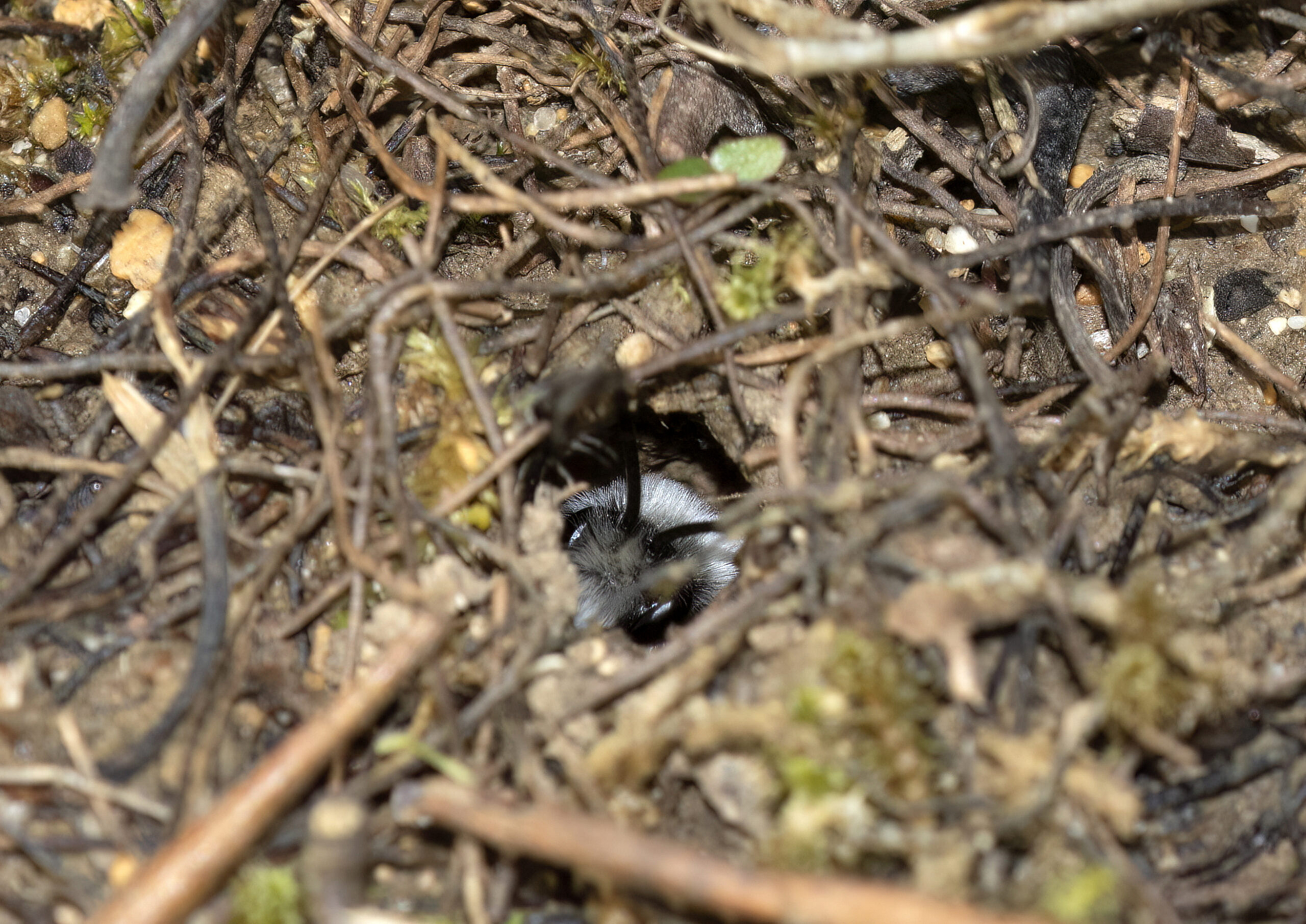
Then there were the butterflies – the greeny-yellow of a brimstone. The orange-tip, named after the intense, roadworks-cone orange of the male’s wingtip, which is my personal harbinger of Spring; and the speckled wood, as its name suggests is a woodland species and which in mid-April is right at the start of its flight season. But as I sat quietly and watched, more things arrived. A common lizard trailed out over the mossy logs to bask in the sun, then though better of it and disappeared down into the grass again. A young bank vole darted across the path, almost running over my boots, to a reception of furious squeaking and rustling of dead leaves . And just as I was leaving the tiny patch of land I’d sat near for most of the day, a downy emerald dragonfly, my first dragonfly of 2024, buzzed past my head.
All of this wildlife was concentrated in or over one small patch of easily-overlooked ground. And this, remember, was just the life I noticed. There were dozens, probably hundreds of creatures I either didn’t notice or couldn’t see. The inverterbrates within the fallen wood, slowly removing it from the ground and turning it into food and nutrients to feed the woodland again. The unseen fungal networks helping that process and taking those nutrients away. The bacteria witihin the soil. Within this few square yards of ground, life and death was occuring on an epic scale. And of course it is occuring on that same scale everywhere that we have unused or barren or ’empty’ ground. There really is no such thing as waste ground, because every millimetre of it has both life and a purpose, it just isn’t always obvious to us. That is why we should lose our fear of the empty and underused, te empty and the seemingly desolate, and instead celebrate them for what they are; places where we have left nature to do what it does best: live.

